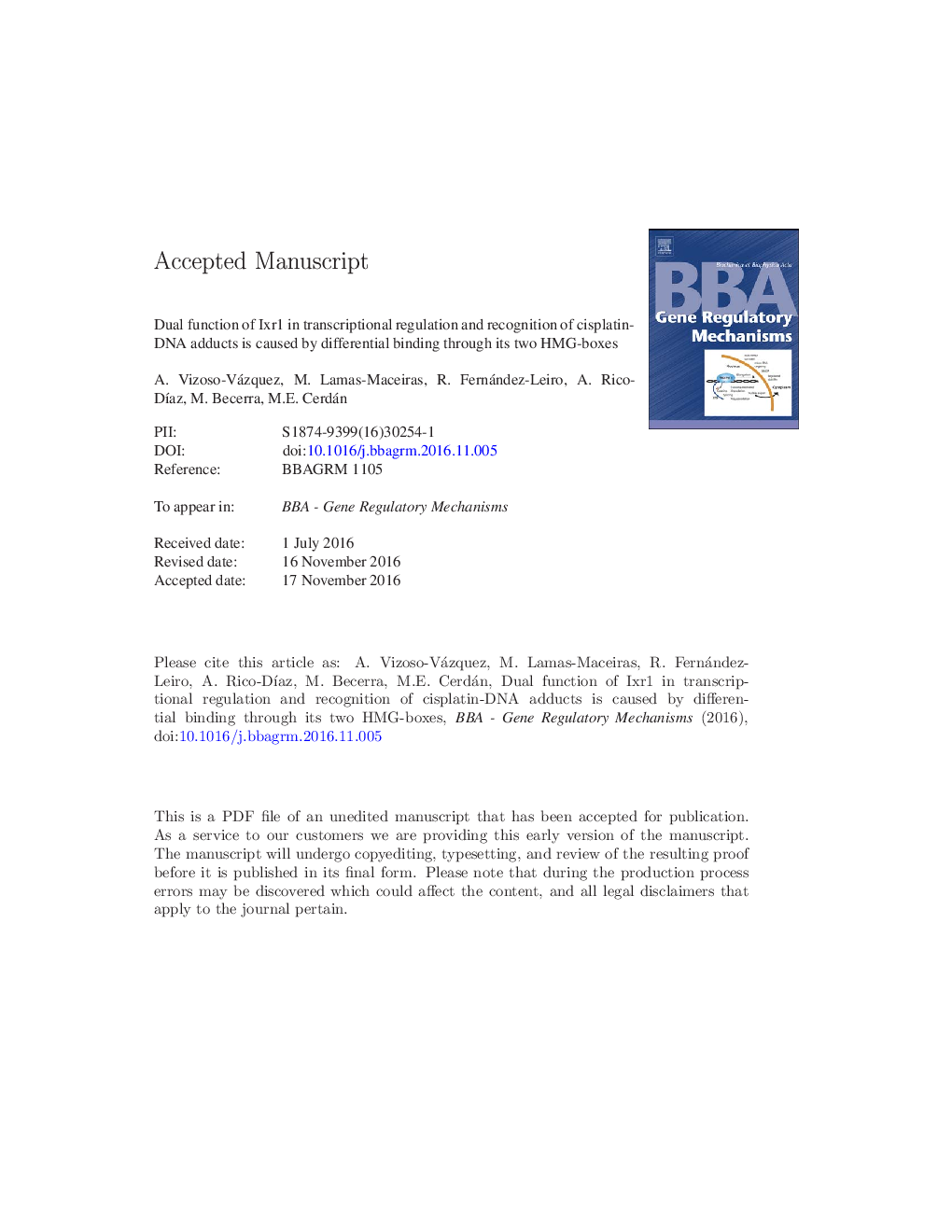| Article ID | Journal | Published Year | Pages | File Type |
|---|---|---|---|---|
| 5507823 | Biochimica et Biophysica Acta (BBA) - Gene Regulatory Mechanisms | 2017 | 48 Pages |
Abstract
Ixr1 is a transcriptional factor involved in the response to hypoxia, which is also related to DNA repair. It binds to DNA through its two in-tandem high mobility group box (HMG-box) domains. Each function depends on recognition of different DNA structures, B-form DNA at specific consensus sequences for transcriptional regulation, or distorted DNA, like cisplatin-DNA adducts, for DNA repair. However, the contribution of the HMG-box domains in the Ixr1 protein to the formation of different protein-DNA complexes is poorly understood. We have biophysically and biochemically characterized these interactions with specific DNA sequences from the promoters regulated by Ixr1, or with cisplatin-DNA adducts. Both HMG-boxes are necessary for transcriptional regulation, and they are not functionally interchangeable. The in-tandem arrangement of their HMG-boxes is necessary for functional folding and causes sequential cooperative binding to specific DNA sequences, with HMG-box A showing a higher contribution to DNA binding and bending than the HMG-box B. Binding of Ixr1 HMG boxes to specific DNA sequences is entropy driven, whereas binding to platinated DNA is enthalpy driven for HMG-box A and entropy driven for HMG-box B. This is the first proof that HMG-box binding to different DNA structures is associated with predictable thermodynamic differences. Based on our study, we present a model to explain the dual function of Ixr1 in the regulation of gene expression and recognition of distorted DNA structures caused by cisplatin treatment.
Related Topics
Life Sciences
Biochemistry, Genetics and Molecular Biology
Biochemistry
Authors
A. Vizoso-Vázquez, M. Lamas-Maceiras, R. Fernández-Leiro, A. Rico-DÃaz, M. Becerra, M.E. Cerdán,
